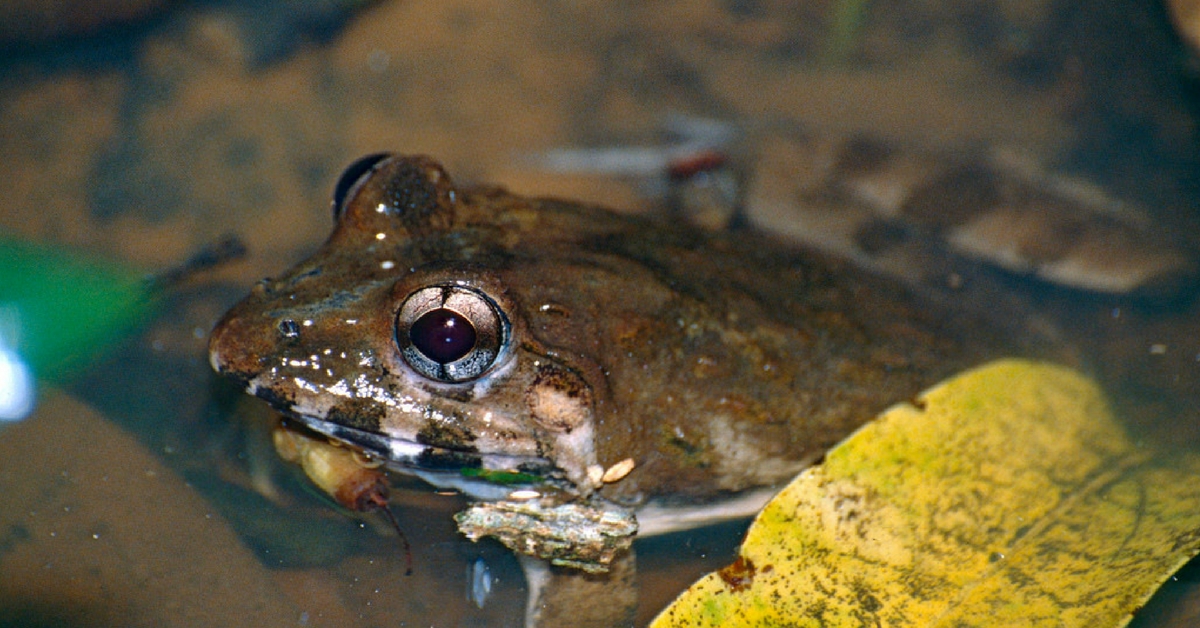Delhi University Researchers Discover 4 New Frog Species in Western Ghats
They discovered the species after five years of extensive research.

Sonali Garg, 29, a PhD student from University of Delhi, under the supervision of Professor SD Birju, has discovered four new species of burrowing frogs in the Western Ghats after five years of extensive research on the amphibians.
The new species belong to the Indian frog genus or group called Fejerarya, and are considered unique because of their ability to burrow with their hind legs. These new species were confirmed by using an integrated taxonomic approach including DNA studies, detailed morphological comparisons and bio-acoustics.

Found in the states of Kerala and Maharashtra, the four new species include Manoharan’s Burrowing Frog discovered in the Agasthyamala Hills in south Kerala, the Kadar Burrowing Frog, discovered in the Vazhachal forest in Kerala, the CEPF Burrowing Frog found in Amboli in Maharashtra, and the Neil’s Cox Burrowing Frog found in the Parambikulam tiger reserve in Kerala.
“These frogs are extremely shy. Sometimes, we would find them and hear them calling but when you actually go closer and try to record their calls, they would stop,” Garg said in an interview.
SD Biju, also popularly known as the ‘Frog Man of India,’ told HuffPost India, “Burrowing frogs are very rare, cryptic and difficult to find. Only 7-8 out of the 230-frog species in the Western Ghats are burrowing frogs. While most frogs in the Western Ghats can be easily spotted during the monsoon, these frogs can be seen for only two to three weeks in June and July. Otherwise, they stay hidden underground or under wooden logs.”
Research has confirmed that the Western Ghats have seen an unprecedented growth of new amphibian species in the last decade. The Western Ghats have recorded the second highest number of the total new species of amphibians described globally (1581) from 2006-2015. Of approximately 159 species found in the Sri Lankan biodiversity hotspot, 103 species were from Western Ghats alone.
Unfortunately, over 32 per cent which make up one-third of the Western Ghat frog population, are dwindling into extinction. “Many of these frogs are extremely rare and found only in specific areas. Any small change in the habitat is more than enough to decrease their population.” said Biju.
Read more: A Remarkable Himachal Discovery and the Tale of an Ancient Extinct Creature of India
The secret behind the nomenclature, is to honour the work of individuals associated with the field.
Fejervarya Manoharani is named after T.M. Manoharan, former principal chief conservator of forests in Kerala, who extended moral support to Prof Biju during the early years of his amphibian research career.
While Fejervarya Cepfi is named after the Critical Ecosystem Partnership Fund (CEPF) USA, Fejervarya Neilcoxi have been named after Neil Cox, the manager of the biodiversity assessment unit at the International Union for Conservation of Nature (IUCN).
“Our study highlights a fairly common group of frogs that is usually found closer to human habitations but is still not documented properly. More extensive studies are required to scientifically identify and describe the Western Ghats frogs which are already facing extinction threats from various human activities,” Sonali Garg said in a Mathrubhumi report.
Like this story? Or have something to share?
Write to us: [email protected]
Connect with us on Facebook and Twitter.
NEW: Click here to get positive news on WhatsApp!
If you found our stories insightful, informative, or even just enjoyable, we invite you to consider making a voluntary payment to support the work we do at The Better India. Your contribution helps us continue producing quality content that educates, inspires, and drives positive change.
Choose one of the payment options below for your contribution-
By paying for the stories you value, you directly contribute to sustaining our efforts focused on making a difference in the world. Together, let’s ensure that impactful stories continue to be told and shared, enriching lives and communities alike.
Thank you for your support. Here are some frequently asked questions you might find helpful to know why you are contributing?


This story made me
-
97
-
121
-
89
-
167











